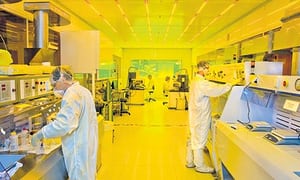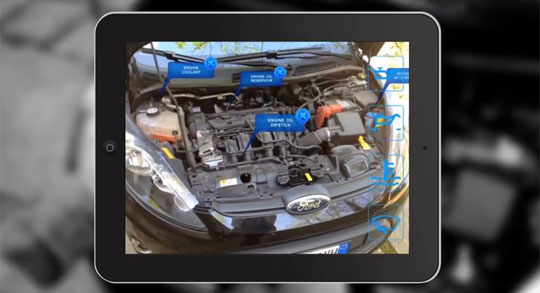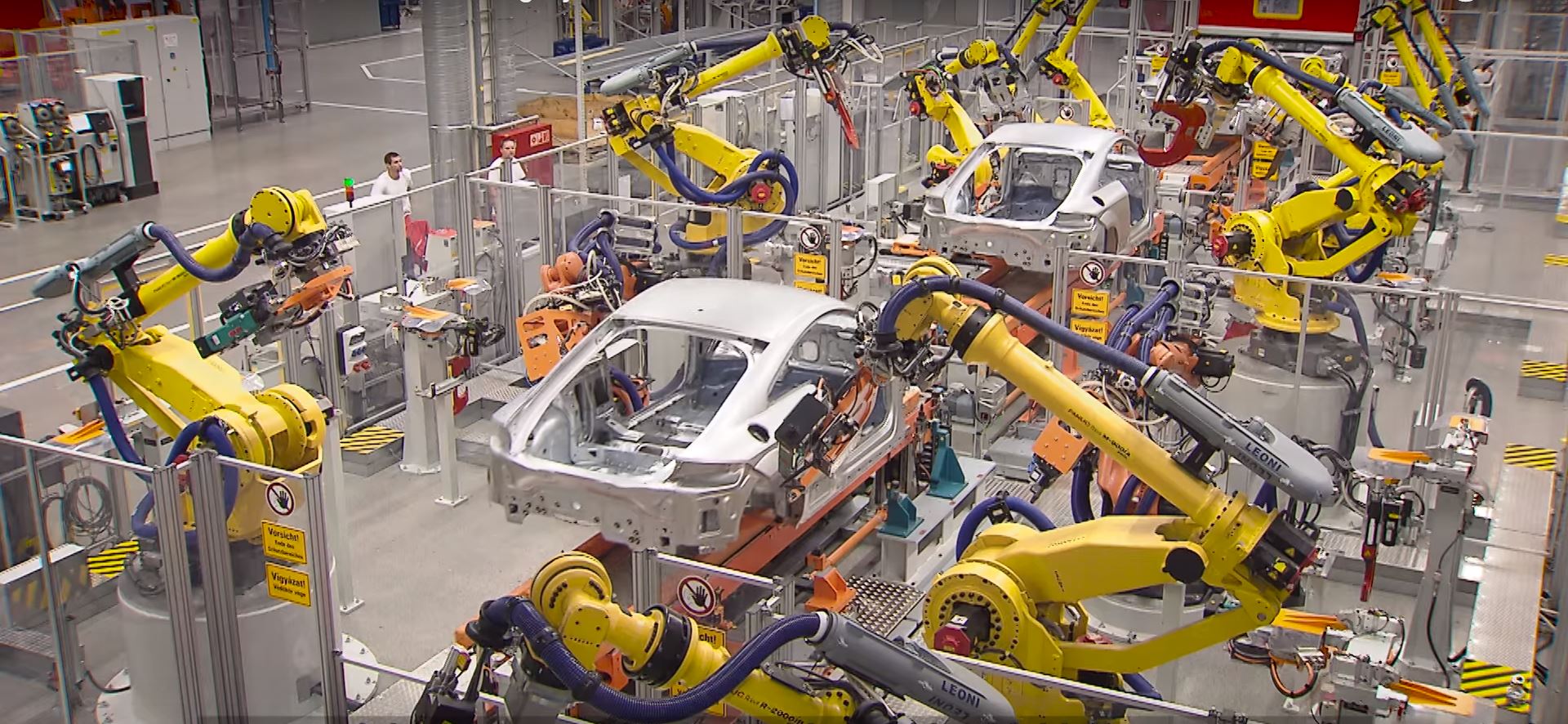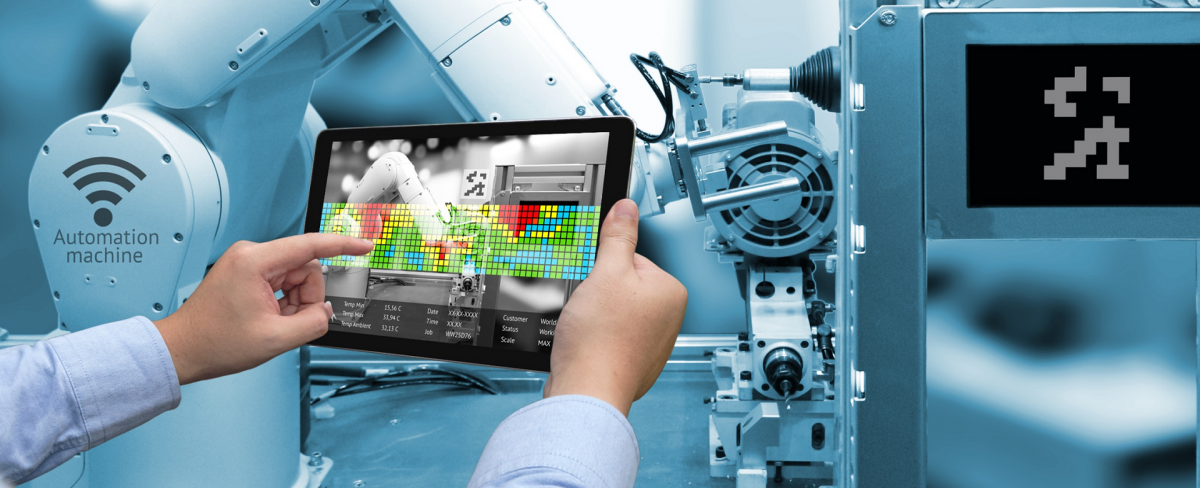Today’s manufacturing technology is not the same as it was a decade ago. The increasingly automated and software-based industries have evolved to just pressing a few buttons with minimum human intervention. The application of new manufacturing technologies has changed the face of production in such a way that was completely unimaginable few years back.
Not only do these technologies cut down the costs but also create precision, speed, efficiency, and flexibility for the companies involved in manufacturing. Here are some of the most powerful advanced manufacturing technologies introduced in the industry.
Table of Contents
Top 10 Advanced Manufacturing Technologies
1) Predictive Analytics & Smart Connected Products

With the evolution of supply chain models, the Predictive Analytics are turning more intellectual and apt to bring about a new revolution in the manufacturing industry. Most manufacturers are working to emphasize on this technology used to improve production. Using this technology, data is cleansed faster and databases are aggregated quicker and data is stored more compact than before. Automation of predictive analysis ensures that the overall quality of the model is improved.
Predictive Analytics enable manufacturers to deal better with machine loss. Automation of data analysis from sensors and automation of the actual machine processes lead to better machine utilization and problem prevention.
2) 3D Printing

As per the latest reports, the 3D Printing technology is intended to change every industry it touches, completely revolutionizing the traditional manufacturing process. The projected value of the industry, as a result, is expected to rise heavily in the near future. This emerging technology would significantly affect the way manufacturers do business, especially in relation to cost calculations, material costs and product pricing strategies.
Advanced manufacturing technologies like 3D Printing is capable of offering infinite and precise manufacturing process options. Using this process, manufacturers can fabricate the part using the minimum material, thereby saving resources wastage and reducing total material costs.
3) Nanofactories

A nanofactory is a proposed compact molecular manufacturing system capable of building a variety of large-scale, atomically precise products. It could produce out of the strongest materials available including sapphire, diamond, and strong ceramics. This means that the products of nanofactories would be very strong and the functionality extremely compact. Due to the simple manufacturing technology, the product complexity would not create any impact on time of building or production cost.
A nanofactory, just like a fabricator, will be capable of duplicating itself. It will be as cheap as any other product so that any number of nanofactories can be set up. The design of this version of any product would be easier than the current process. The strength of products, ease, and speed of operations and compactness of components combine together to make this technology highly useful and successful.
4) Augmented Reality

This technology creates interactive elements around you to deliver an enjoyable experience. In recent years, the scope of Augmented Reality has increased in a manufacturing industry. It aims to give rise to efficient operations by reducing the downtime, instantly identifying problems and keeping processes going. With the use of AR in manufacturing processes, accuracy and speed of workers increases. It is possible to solve all the problems in real time using this technology.
Manufacturers, with the help of advanced manufacturing technologies like AR, will always have access to all the information at all the times. Augmented Reality devices make it possible to instantly identify any flaws and prevent any downtime from occurring.
5) Light’s Out Manufacturing

The manufacturing process where factories operate completely autonomously, without any human intervention, is referred to as Lights Out Manufacturing. It actually means the production process in which the machines are fully self-sufficient. Though lights-out manufacturing in its real sense is still rare, more and more processes are running with very limited human interaction in today’s world.
There are numerous benefits to considering lights-out approach for manufacturing processes. Finding skilled employees is one reason to use collaborative robots while others may want to achieve better throughput rates and product quality. This process is specifically beneficial in a hazardous environment such as paint shops where gases and temperatures can pose danger to human workers.
6) Predictive Maintenance

One of the primary ways that the manufacturing industry is benefitting from smart technologies is through Predictive Maintenance. This type of solutions collects the data and analyzes information using sophisticated algorithms. The software makes use of historical performance to forecast how the monitored equipment and the entire production line will function.
Predictive Maintenance has four main associated benefits – increased production, faster and better-informed decision-making, reduced costs and downtime and improved product quality. To use predictive maintenance in manufacturing, an analytic solution is employed and it can predict the quality issues and asset failure. The organization can integrate the available data into systems for further analysis and improvements.
7) Advanced Industrial Robots

I’m sure you’ve come across various footages of large ‘Industrial Hands’ powder coating an automobile without any human interference, such technologies were once restricted to the automobile industry, but today, advanced robotics are dominating various industrial sectors. Reports state that industrial manufacturers across fields are looking to achieve an edge through the use of advanced robotics.
Industrial robots have turned faster, smarter and more affordable and come equipped with advanced capabilities like memory, sensing, dexterity, trainability and more.
The world is approaching a point where the growing capabilities and reducing manufacturing costs of robots will initiate their introduction to a great extent throughout the industry. The advanced industrial robots would bring about the fourth industrial revolution in which a new system of flexible and automated production will come up where the robots and the machines will communicate among themselves to optimize the process.
8) Advanced Materials

Nothing can impact the making and functionality of things more than the materials used to make those things. Advanced materials change the manufacturing process as well as the end results. Various new materials are developed to help engineers and inventors make optimum use of next-generation technologies. Such materials include flexible concrete cloth for construction, super-insulating aerogels for spacesuits, complex natural polymers which replace the toxic plastics and much more.
Cutting-edge advanced materials developed to change the manufacturing technologies. For instance, carmakers would come up with porous polymers and innovative steel alloys which are lighter and stronger so as to make the vehicles more fuel efficient and safer.
9) Mass Customization / Personalization

Today’s market wants customization with the return of craftsmanship on a mass industrial scale. This manufacturing technology is called Mass Customization that combines the charm of artisanal production with the advantage of mass production.
Google is leading this technology movement with a new smartphone platform specifically designed to introduce customization to masses. Such a phone would be a combination of hardware features and modules that allow customization and upgrade as per the expectations and budget of the users. This gesture of Google is a powerful instance of what the future of manufacturing will be like.
10) On-Demand Manufacturing

This is an innovative business model which allows vendors to support the production of items right from the initial design concept to the final delivery to the client. This is made possible with the help of a cloud-based platform which helps developers manage projects, receive instant quotes and track the inventory from anywhere, anytime.
With this technology, anybody can manufacture anything, from T-shirts, furniture, and jewelry to robots and machines. It involves no warehouse, no minimum order, and no investment. On-demand manufacturing eliminates the constraint of availability and creates a market where products are always available, no item is ever discontinued and the shelves are stocked forever.





